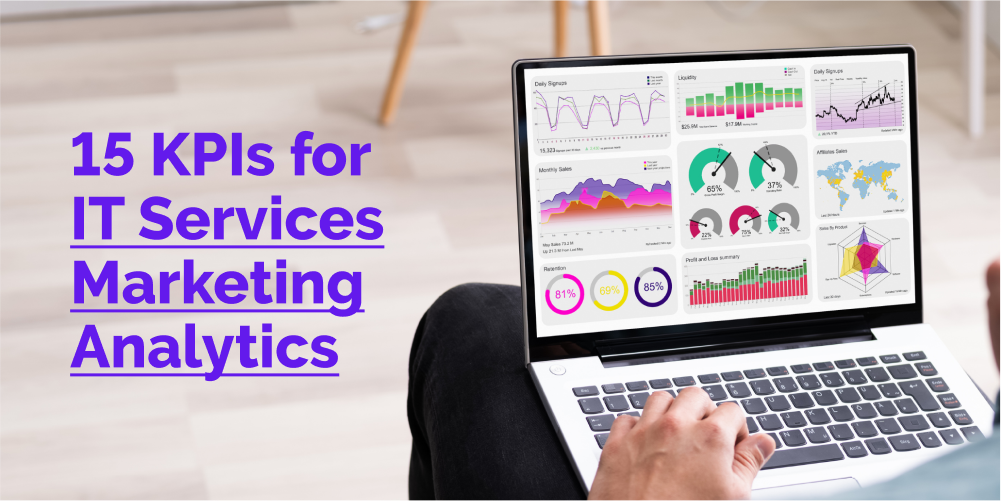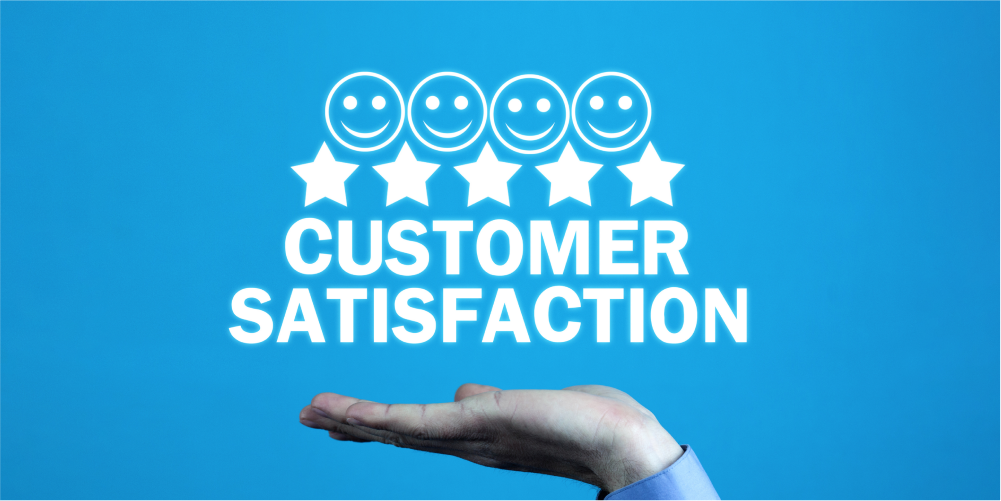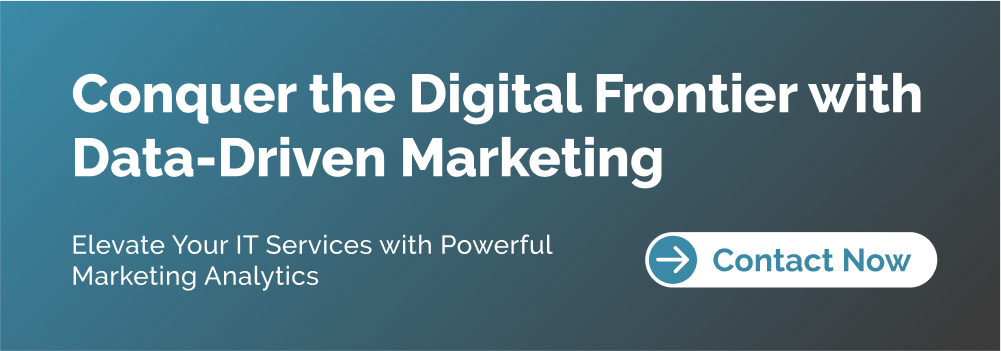MarTech, zBlog
Which 15 KPIs Should You Track to Capture Marketing Analytics in the IT Services Industry?
atif | Updated: April 25, 2024

Introduction
In the dynamic and competitive landscape of enterprise-level IT services, data-driven marketing is no longer a luxury; it’s a strategic imperative. Understanding which Key Performance Indicators (KPIs) to track empowers you to measure campaign effectiveness, optimize your marketing spend, and ultimately generate qualified leads that convert into loyal, high-value clients. This comprehensive guide delves into the 15 crucial KPIs you should consider, along with specific industry use cases tailored to the IT services sector.
Brand Awareness and Lead Generation: Building Visibility and Capturing Interest

- 1. Website Traffic: This foundational metric provides a baseline for measuring overall website visibility. Track total visitors, unique visitors, and referral sources to understand how potential IT decision-makers are finding your company.
Industry Use Case: Analyze website traffic data by channel (organic search, social media, paid advertising) to identify which sources drive the most qualified leads within the IT services industry. This allows you to focus your efforts on the most effective channels for reaching your target audience. - 2. Social Media Engagement: Social media platforms offer a powerful way to connect with potential clients and establish your company as a thought leader in the IT space. Track metrics like likes, shares, comments, and mentions to gauge audience interest in your social media content.
Industry Use Case: Monitor social media engagement on posts promoting upcoming webinars hosted by your IT security specialists or blog articles discussing emerging trends in cloud computing solutions. High engagement indicates your content aligns with the interests and needs of IT decision-makers on these platforms. - 3. Lead Generation: Tracking the number of leads generated through various marketing channels (e.g., website forms, email signups, downloadable content) allows you to measure the effectiveness of your efforts in attracting potential clients interested in your IT services.
Industry Use Case: Measure the number of leads generated from a targeted social media campaign promoting a free white paper on “The Top 5 Cybersecurity Threats Facing Businesses in 2024.” This helps determine the effectiveness of the campaign in attracting qualified leads within the IT security domain.
Website Traffic and User Engagement: Understanding User Behavior

- 4. Page Views per Visit: This metric indicates the depth of user engagement on your website. Higher page views per visit suggest users are finding valuable content and exploring different offerings related to your IT services. Industry Use Case: Track page views per visit for specific landing pages promoting your managed IT service packages. High page views may indicate users are interested in learning more about specific services. Conduct A/B testing of calls to action or content enhancements to optimize conversion rates for these landing pages and encourage users to take the next step, such as requesting a free consultation.
- 5. Bounce Rate: This metric measures the percentage of visitors who leave your website after viewing only one page. A high bounce rate can indicate your website isn’t effectively engaging users or meeting their expectations when it comes to IT service offerings.
Industry Use Case: Analyze bounce rates for landing pages promoting your cloud migration services. A high bounce rate might indicate the landing page lacks a clear value proposition or has confusing navigation, hindering the conversion of potential IT clients. Consider revising the landing page content to address pain points faced by IT decision-makers during cloud migration and ensure clear calls to action for requesting a free assessment. - 6. Average Time on Site: This metric indicates how long users are spending on your website. Longer average time suggests users are finding valuable content and engaging with your offerings related to IT services.
Industry Use Case: Track average time on site for blog posts discussing best practices for IT infrastructure management. A higher average time indicates the content is informative and relevant to IT decision-makers seeking solutions to optimize their IT infrastructure.
Marketing Campaign Performance: Measuring What Works and What Doesn’t

- 7. Click-Through Rate (CTR): This metric measures the percentage of users who click on a link in your email campaigns, social media posts, or website ads promoting your IT services.
Industry Use Case: Track the CTR for email campaigns promoting a webinar on IT compliance best practices for healthcare organizations. A low CTR might indicate the email subject line or offer didn’t resonate with your target audience of IT professionals in the healthcare sector. Consider A/B testing different subject lines and email content formats to optimize campaign performance for this specific audience. - 8. Cost per Lead (CPL): This metric indicates the total cost of acquiring a new lead through a specific marketing channel (e.g., pay-per-click advertising, social media marketing) for your IT services.
Industry Use Case: Calculate the CPL for different paid advertising campaigns promoting your managed IT service offerings. This helps determine which channels are most cost-effective for attracting qualified leads within the IT services industry. Consider allocating a higher budget to channels with lower CPLs that generate high-quality leads most likely to convert into paying clients. - 9. Conversion Rate: This metric measures the percentage of website visitors who take a desired action, such as downloading a white paper on IT security solutions, requesting a demo of your cloud migration services, or contacting your sales team for a consultation.
Industry Use Case: Track conversion rates for different landing pages promoting free consultations with IT security specialists. Low conversion rates might signify the landing page lacks compelling reasons to contact you or doesn’t effectively address common IT security challenges faced by your target audience. Revise the landing page content to highlight the expertise of your security specialists and showcase success stories demonstrating your ability to address their specific needs.
Marketing ROI (Return on Investment): Measuring the Bottom Line

- 10. Marketing Qualified Leads (MQLs): These are leads who have demonstrated a strong interest in your IT services and are considered sales-ready based on specific criteria you define.
Industry Use Case: Track the number of MQLs generated from various marketing campaigns promoting your IT consulting services. This allows you to identify campaigns most effective at attracting qualified leads likely to convert into paying clients for your IT consulting expertise. - 11. Sales Qualified Leads (SQLs): These are MQLs who have been vetted by the sales team and deemed highly likely to convert into customers for your IT services.
Industry Use Case: Measure the conversion rate of MQLs to SQLs. A low conversion rate might indicate a gap between marketing and sales teams. Addressing this gap could involve providing sales reps with more information about MQLs, conducting joint training sessions to ensure a smooth handoff, and aligning messaging between marketing and sales efforts related to your IT service offerings. - 12. Customer Acquisition Cost (CAC): This metric indicates the total cost of acquiring a new customer for your IT services, including marketing and sales expenses.
Industry Use Case: Track CAC for different marketing channels and compare it to the average lifetime value of your IT services clients. This helps determine which channels yield the most profitable customer acquisition for your IT services business. Allocate your marketing budget strategically, focusing on channels with lower CACs that deliver high-value customers who generate recurring revenue through long-term partnerships. - 13. Customer Lifetime Value (CLTV): This metric estimates the total revenue a customer is expected to generate over their entire relationship with your company, considering not just initial sales but also potential upsells and renewals for your IT services.
Industry Use Case: Analyze CLTV for different customer segments within the IT services industry. This allows you to tailor marketing campaigns to high-value segments, such as large enterprises with complex IT infrastructure needs. Develop strategies for increasing customer retention and upselling additional IT services that address their evolving needs over time.
Customer Satisfaction and Advocacy: Building Long-Term Relationships

- 14. Net Promoter Score (NPS): This customer success metric measures customer loyalty and likelihood to recommend your company’s IT services to others.
Industry Use Case: Regularly survey IT service clients to gauge their NPS. A low score indicates areas for improvement in customer satisfaction. Analyzing NPS feedback can reveal issues with your IT service delivery or highlight areas where marketing messaging doesn’t align with the actual customer experience you provide. Use this feedback to refine your marketing strategy and ensure it accurately reflects the value proposition of your IT services. - 15. Customer Reviews and Testimonials: Positive online reviews and testimonials from satisfied customers serve as powerful social proof and build trust with potential clients seeking IT service providers.
Industry Use Case: Encourage satisfied IT services clients to leave reviews on platforms like Google My Business or Clutch. Showcase positive testimonials on your website and social media channels to build trust and credibility with potential clients in the IT sector.
Trantor: Elevating Your Digital Presence with Data-Driven Marketing

Embrace the power of data, and let Trantor be your trusted partner on this transformative journey. Our comprehensive digital marketing services for the IT sector are built upon a foundation of data-driven insights and continuous optimization.
We begin by gaining a deep understanding of your business goals, target audience, and the unique challenges faced by IT decision-makers. Through extensive market research and competitor analysis, we identify the most relevant KPIs to track and develop a customized measurement strategy tailored to your specific needs.
Our team of digital marketing experts then leverages cutting-edge tools and technologies to monitor and analyze these KPIs in real time. By interpreting the data through the lens of the IT services industry, we uncover actionable insights that inform every aspect of your marketing strategy – from content creation and social media engagement to lead nurturing and conversion optimization.
At Trantor, we don’t just report on the numbers; we take a proactive approach to optimizing your marketing performance. Our data-driven methodology enables us to quickly identify areas for improvement and implement data-backed solutions. Whether it’s refining your website’s user experience, optimizing ad campaigns for better cost-per-lead, or enhancing your sales enablement process, we ensure that your marketing efforts are consistently delivering maximum impact.
Moreover, we recognize the importance of aligning marketing and sales efforts for seamless lead handoff and conversion. By fostering close collaboration between our teams and your sales representatives, we ensure that marketing-generated leads are effectively nurtured and converted into long-term, high-value clients for your IT services business.
Unlocking Sustainable Growth with Data-Driven Marketing Excellence

In today’s competitive IT services landscape, data-driven marketing is no longer an option; it’s a necessity for unlocking sustainable growth and outpacing the competition. By embracing the power of data and partnering with Trantor, you gain a strategic advantage that positions your business at the forefront of the industry.
Through our comprehensive suite of data-driven marketing services, we empower you to:
- Attract and engage your ideal target audience with precision
- Optimize your marketing spend for maximum return on investment
- Nurture and convert high-quality leads into loyal, long-term clients
- Continuously refine and enhance your digital presence for improved performance
- Foster customer advocacy and build a trusted brand reputation
Don’t let valuable marketing insights and opportunities slip through the cracks. Partner with Trantor and harness the power of data to elevate your digital presence, drive business growth, and conquer the ever-evolving IT services landscape.
Take the first step towards data-driven marketing excellence today. Connect with our team of experts and unlock the full potential of your IT services business.




